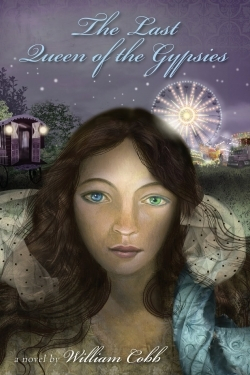
The Last Queen of Gypsies
There is something in October sets the gypsy blood astir,
We must rise and follow her;
When from every hill of flame,
She calls and calls each vagabond by name.—William Bliss Carman
On the side of a deserted road in Central Florida in 1932, eleven-year-old Minnie is left by her parents, migrant fruit pickers. Wary of Minnie’s one green eye and one blue eye, her mother is sure Minnie is evil, the “handmaiden of Beng.” She says “good riddance” to the extra mouth to feed. Cold and hungry, Minnie finds shelter in a secluded cabin inhabited by Alexander Mossback Frill. When Frill tries to rape her, Minnie kills him, sets the cabin on fire, and sets off again. So begins her tumultuous life of running from one trouble to the next.
In the small town of Piper, Florida, in 1964, fourteen-year-old Lester Ray says a final goodbye to his abusive, alcoholic father and heads out in search of the gypsy mother who abandoned him at birth. His traveling companion is eighty-three-year-old Mrs. McCrory, Lester’s only friend, who is determined to evade the son intent on sending her to a nursing home.
In The Last Queen of the Gypsies, William Cobb masterfully parallels the stories of Minnie and Lester Ray, and the various colorful characters they meet along the way—including a dwarf named Virgin Mary Duck, the freakish crew of a traveling carnival—in a story of love and loss, hope and despair, and the resilience of the human spirit.
Minnie is only happy when she is wandering. Lester Ray will only be happy when his wandering has come to an end. The novel is not fast-paced, but that does not mean it isn’t captivating. Cobb spends time with his characters. Though the reader will likely guess at the connection between Minnie and Lester Ray long before the relationship is revealed, this knowledge doesn’t detract from the story.
William Cobb is the 2007 winner of the Harper Lee Award for Distinguished fiction writing, and the author of six novels. He was the writer-in-residence for many years at the University of Montevallo. A writer with a distinctly Southern voice, Cobb’s The Last Queen of the Gypsies is a satisfying addition to Southern fiction.
In addition, The Last Queen provides a fascinating glimpse into the lives of North American Romany Gypsies. Readers interested in the early and mid-twentieth-century South and character-driven novels will enjoy Cobb’s moving story of two lonely people searching for their roots.
Reviewed by
Julie McGuire
Disclosure: This article is not an endorsement, but a review. The publisher of this book provided free copies of the book to have their book reviewed by a professional reviewer. No fee was paid by the publisher for this review. Foreword Reviews only recommends books that we love. Foreword Magazine, Inc. is disclosing this in accordance with the Federal Trade Commission’s 16 CFR, Part 255.
